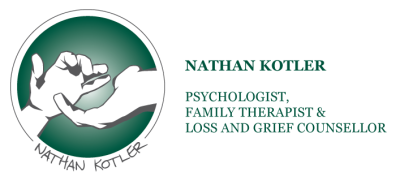In EMDR Therapy, ‘Bilateral Stimulation’ is Used. What is Bilateral Stimulation & Why is it Important?
Coherence Associates Inc. June, 2016
EMDR Therapy has been validated as an effective treatment for Posttraumatic Stress Disorder as evidenced by controlled clinical research studies. EMDR Therapy has consistently shown effectiveness with other issues involving negative memories that create roadblocks and challenges in a person’s quality of life. There are several benefits to EMDR Therapy that include efficient and relatively quick positive results, as compared to other traditional psychotherapy models. A unique factor with EMDR is the use of bilateral stimulation to assist in re-filing upsetting memories.
Bilateral Stimulation (BLS) simply means stimulation of both sides, as in both sides of the brain. In EMDR Therapy we use this method to assist the client in processing traumatic memories, and in processing fears or worries of future problems. BLS is used to activate or ‘awaken’ the whole brain, similar to the function of ‘Rapid Eye Movement’ (REM) sleep patterns. Bilateral Stimulation is believed to facilitate the process of the re-filing of memories into a more efficient and useful place in the brain and body. There are basically two theories of why BLS, in particular left to right, or vertical to horizontal eye movements, is beneficial to the client’s ability to process disturbing memories. One is the ‘working memory’ theory, and the other is the idea that BLS increases ‘interhemispheric communication.’
‘Working memory’ theory – Stored information in memory, that is currently active (recalled), is stored in what is known as ‘working memory.’ Long-term memory is memory, or information that is not currently active. Long-term memory has a huge storage capacity, where ‘working memory’ does not. In EMDR therapy, when we activate a disturbing memory, bringing it into ‘working memory,’ then introduce bilateral stimulation (eye movements), we are taxing the working memory system by this simultaneous tasking. Recalling a negative memory, and doing eye movements at the same time, has been shown to diminish the vividness of the memory and deflate the stored emotional charge on that memory. This works with highly charged traumatic memories and mildly negative memories. Once the vividness and emotional charge is deflated, the person is more easily able to recall and discuss the memories without feeling upset, and it no longer takes unnecessary energy from the brain and body systems. Thus they have more energy, are less distracted by the past, and able to be more present in their lives. We know when this has been effective when a client says, “I rarely think about it any more,” or “When it comes to mind now, it just doesn’t bother me,” or “I tried to feel upset about it, and I just don’t, I have more peace about what happened to me, it’s over now.”
The concept that BLS improves the brain’s communication between the hemispheres has been a long held belief within the EMDR community. The concept is that the eye movements improve the ability to recall a negative memory without the negative feelings, by stimulating communication between the two hemispheres, the whole brain approach to re-filing (reprocessing) disturbing memories. This improved whole brain communication decreases the intensity and vividness of how the memories were previously held with in the nervous system.
Your EMDR therapist may use a variety of methods, all incurring the same results. Here at Coherence Associates, Inc. we frequently use multiple methods paired together or alternating depending on the individual client’s preferences.
Options for Conducting BLS
- Traditional hand/fingers directed eye movements in which the client follows the therapists hand with their eyes left to right.
- Eye movements directed by a pointer, following the pointer left to right.
- Eye movements directed by a light bar in which the client follows a moving light.
- Tapper – These are buzzers attached to a control box, which vibrate in the client’s hands. The client can hold one in each hand, or place them under each leg as they sit. The therapist can adjust the intensity and speed of the buzzing
- Physical tapping – The therapist can tap on each knee, top of hands, or shoulders, or direct you to tap on yourself.
- Auditory tones – A headset is worn and a tone alternates left to right. Volume and speed can be adjusted.
- Swaying or walking in place.
The ‘eyes’ have it!
While evidence has shown greater effectiveness with using ‘eye movements’ than the other methods of BLS, most EMDR Therapists will report effectiveness with all methods. So in theory, all forms of BLS generate the same response from the nervous system, the choice comes down to client comfort. For example, some people may not like or be able to tolerate eye movements, but could easily tolerate tapping, and vice versa. Feel free to try out different methods of BLS with your therapist to discover what suits you best.
Leave a reply